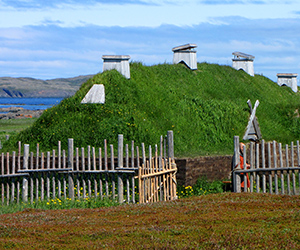CANADA HISTORY - Places-Forts
Fort Steele

Fort Steele, located on the western slopes of the Rocky Mountains in British Columbia, began its history in 1864 as a small settlement during a minor gold rush. Originally known as Galbraith’s Ferry, it was founded by John Galbraith, who capitalized on the influx of gold seekers by establishing a ferry service across the Kootenay River. Over time, the town grew and played an important role in the region’s early development. However, it faced a rapid decline, nearly becoming a ghost town, before being revived and preserved as Fort Steele Heritage Town, a popular provincial heritage site. The town's rich history reflects the broader story of western Canada’s frontier, from gold rushes and Indigenous relations to the construction of the Canadian Pacific Railway and the shifting fortunes of early settlements.
Origins of Galbraith’s Ferry and the Gold Rush of 1864
The gold rush that gave birth to Galbraith’s Ferry was part of a broader series of gold discoveries in British Columbia during the mid-19th century. Although the Fraser River Gold Rush of 1858 is the most famous, gold discoveries in the Kootenay region in 1864 also attracted prospectors to the area. John Galbraith, recognizing the economic opportunity, founded a small settlement near the Kootenay River. He established a ferry service, transporting miners, traders, and settlers across the river to the goldfields and other locations. His ferry became a critical link in the region, as the large lakes and rivers made transportation difficult for travelers in the rugged terrain.
The lakes in the area stretched for hundreds of miles, running along trenches between towering mountain ranges, making crossing them essential for those heading to the goldfields. Galbraith’s Ferry quickly became a central point for trade and movement in the area, and the town around it grew steadily. However, the initial gold rush was relatively short-lived, and the settlement’s fortunes fluctuated with the ebb and flow of prospecting activity.
Sam Steele and the Re-naming of the Town
By 1888, tensions were growing between the settlers in Galbraith’s Ferry and the Indigenous Ktunaxa people who had long inhabited the region. Disputes over land use and resources threatened to escalate into violence, reflecting the broader conflict between settlers and Indigenous communities across Canada. It was at this point that Sam Steele, a senior officer of the North West Mounted Police (NWMP), was sent to the area to restore order and prevent further escalation.
Sam Steele, a legendary figure in Canadian history, had already built a reputation as a capable and effective officer. Having played a key role in pacifying the prairies and managing Indigenous relations in western Canada, Steele was the ideal choice to intervene in the delicate situation. When a dispute between a settler and a local Indigenous leader threatened to boil over, Steele stepped in and mediated the conflict, successfully diffusing the tension without bloodshed.
Grateful for Steele’s intervention and leadership, the townspeople decided to rename the settlement in his honor. Thus, Galbraith’s Ferry became Fort Steele, a reflection of the town’s connection to the NWMP and Steele’s role in maintaining peace in the area. The renaming also signaled a new chapter in the town’s history, as it continued to grow and develop in the 1890s.
The Impact of the Railway and the Rise of Cranbrook
As Fort Steele entered the 1890s, its future seemed bright. The town’s location near the Kootenay River and its growing population made it a natural candidate for the Canadian Pacific Railway (CPR), which was expanding its network across British Columbia. The railway promised to bring economic prosperity, connecting the region to national and international markets and facilitating trade and travel.
However, Fort Steele’s fate took an unexpected turn due to political interference and the actions of a local landowner named James Baker. Baker, a wealthy and influential figure, owned large tracts of land near the small settlement of Cranbrook, a short distance from Fort Steele. Using his political connections, Baker was able to influence the decision of where the railway line would be constructed. Rather than passing through Fort Steele, the CPR built its line through Cranbrook, ensuring that Baker’s land would become the hub of economic activity in the region.
This decision had devastating consequences for Fort Steele. The railway bypassed the town, and as a result, many of its residents began to relocate to Cranbrook, lured by the economic opportunities offered by the railway. Baker, who had purchased large amounts of land in Cranbrook, profited handsomely by selling plots to Fort Steele’s residents and others. Fort Steele, once a bustling town with great promise, quickly began to decline as businesses and residents moved to Cranbrook.
Fort Steele’s Decline and Revival as a Heritage Town
By the early 20th century, Fort Steele had become a shadow of its former self. The town, now bypassed by the railway and economically marginalized, saw its population dwindle. Many of its buildings fell into disrepair, and it seemed destined to fade into obscurity, like so many other frontier towns that had flourished briefly before being abandoned.
However, Fort Steele’s story did not end in abandonment. In the 1960s, as Canada prepared to celebrate its centennial, interest in the country’s history and heritage grew. Local historians and preservationists recognized the historical significance of Fort Steele, both as a representative of Canada’s frontier past and as a town that had played a key role in the development of the Kootenay region.
In 1967, Fort Steele was designated a Provincial Heritage Site, marking the beginning of a major restoration and preservation effort. Over the next few years, many of the town’s original buildings were restored, and new structures were reconstructed to recreate the appearance and atmosphere of a 19th-century frontier town. Fort Steele Heritage Town officially opened in 1969, offering visitors a chance to step back in time and experience life as it was during the gold rush era.
Today, Fort Steele Heritage Town is one of British Columbia’s most popular historical attractions. Visitors can explore the town’s many restored buildings, including the general store, blacksmith shop, and courthouse. The site also features live demonstrations of traditional crafts, such as blacksmithing and printing, as well as performances by costumed interpreters who bring the history of the town to life.
Fort Steele’s history is a microcosm of the broader forces that shaped western Canada in the 19th and early 20th centuries. From its origins as Galbraith’s Ferry during the gold rush of 1864 to its renaming in honor of Sam Steele and its near-abandonment following the construction of the railway, the town’s story reflects the tumultuous and often unpredictable nature of frontier life. Although Fort Steele nearly disappeared, its restoration as a heritage town in the 1960s and 1970s ensured that its history would be preserved for future generations. Today, Fort Steele serves as both a reminder of the challenges and opportunities faced by early settlers and a tribute to the resilience of those who helped shape Canada’s western frontier.
Cite Article : Reference: www.canadahistory.com/sections/documents/documents.html
Source: NA



